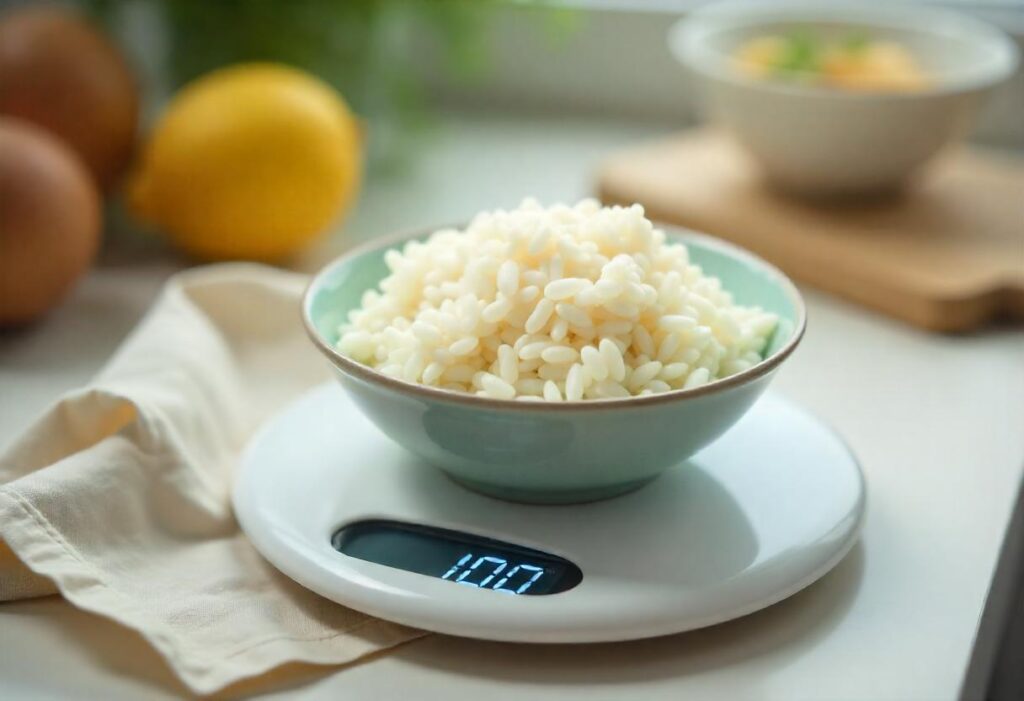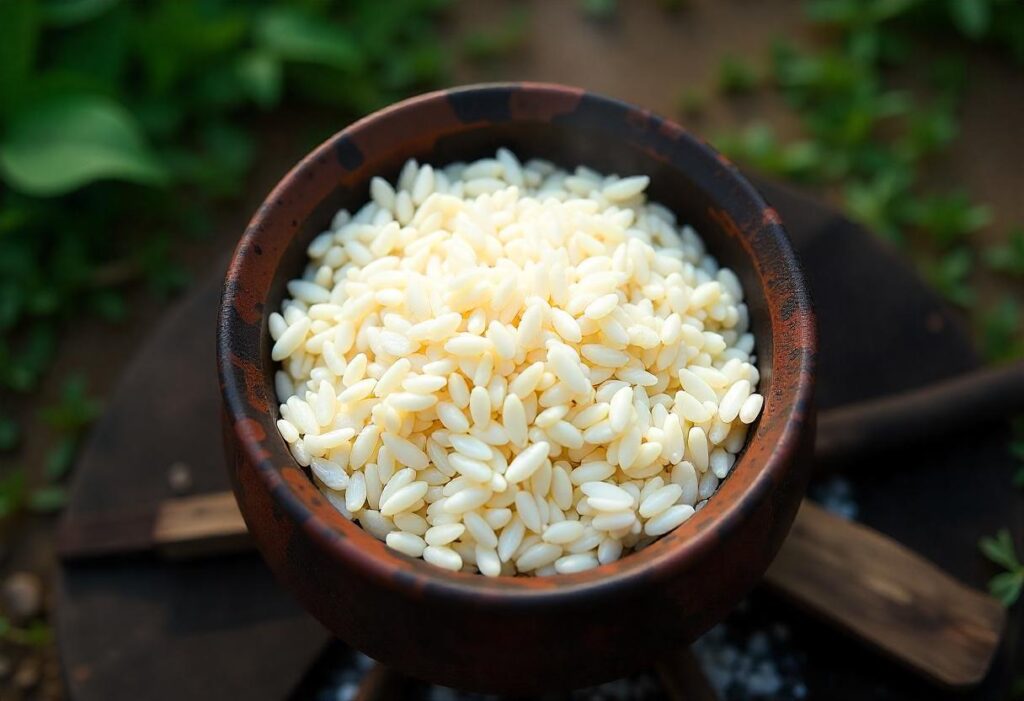If you love rice but worry about its impact on your diet, don’t stress!
Learning how to cook rice to lose weight the right way allows you to enjoy this staple without guilt.
In this guide, we also cover effective cooking rice for weight loss techniques and rice weight loss methods that preserve flavor while boosting your health.
Mastering how to cook rice to lose weight is essential for anyone who wants to incorporate delicious, low-calorie rice dishes into a balanced diet
How to Cook Rice to Lose Weight: 7 Healthy Methods
If you love rice but worry about its impact on your diet, don’t stress!
Learning how to cook rice to lose weight the right way allows you to enjoy this staple without guilt.
In this guide, we also cover effective cooking rice for weight loss techniques and rice weight loss methods that preserve flavor while boosting your health.
Mastering how to cook rice to lose weight is essential for anyone who wants to incorporate delicious, low-calorie rice dishes into a balanced diet.
Key Reminder: Remember, understanding how to cook rice to lose weight will transform your meals into nutritious, weight-friendly options.
1. Can You Still Eat Rice and Lose Weight?
Many believe that rice automatically leads to weight gain—but the truth is, it’s all about the preparation and consumption. Rice is low in fat and rich in essential nutrients, yet high in carbohydrates.
➡ Related: Does the Rice Hack Really Work?
Learning how to cook rice to lose weight means understanding that, when consumed mindfully as part of a balanced diet, rice can be a valuable asset in your weight loss journey. When consumed mindfully as part of a balanced diet, rice can be an asset rather than a hindrance on your weight loss journey.
“Rice isn’t the enemy—bad eating habits are! When prepared the right way, rice can actually help with weight loss.”
2. Best Types of Rice to Choose
Different rice types impact your weight loss efforts in various ways. Consider these options when deciding how to cook rice to lose weight
| Type of Rice | Calories (1 cup, cooked) | Fiber Content | Glycemic Index | Best For Weight Loss? |
|---|---|---|---|---|
| Brown Rice | 215 kcal | 3.5g | Medium | High fiber |
| White Rice | 205 kcal | 0.6g | High | Lower fiber |
| Wild Rice | 166 kcal | 3.0g | Low | Low-calorie & fiber-rich |
| Quinoa | 222 kcal | 5.2g | Low | High protein & fiber |
| Basmati Rice | 190 kcal | 1.3g | Medium | Lower GI |
➡ Related: The Ultimate Rice Hack Recipe
Key takeaway: Brown rice, wild rice, and alternatives like quinoa provide more fiber and protein, helping you stay full longer and maintain stable blood sugar levels.

3. How to Cook Rice to Lose Weight : Methods to Reduce Calories & Starch
A. Starch-Reduction Method
This technique, supported by research, can reduce the calorie content of rice significantly:
- Step 1: Boil water and add 1 teaspoon of coconut oil per ½ cup of rice. 📝 What is the 5 5 5 Rule for Rice? – A great alternative to optimize texture and digestion.
This is a crucial step in learning how to cook rice to lose weight, as it helps to modify the starch structure.
Incorporating this technique shows exactly how to cook rice to lose weight effectively while preserving flavor This step is essential for understanding how to cook rice to lose weight while reducing its starch content effectively.
This step is essential in learning how to cook rice to lose weight without compromising taste. The oil interacts with the starch molecules, altering their structure. - Step 2: Cook the rice as usual, ensuring the oil evenly coats the grains.
- Step 3: Refrigerate the cooked rice for at least 12 hours. This cooling period converts part of the starch into resistant starch, which is less digestible and results in fewer absorbed calories.

B. Cooking Rice with Extra Fiber
Boosting your rice with fiber-rich ingredients helps slow down digestion and extends satiety:
- Mix in: Chopped vegetables such as carrots, spinach, or bell peppers.
- Protein Boost: Add lentils or beans to improve the protein and fiber profile.
- Extra Satiety: Stir in flaxseeds or chia seeds for an additional boost in fiber content.
- ➡ Related: What Can I Add to Rice to Make It Tasty?
“More fiber = fewer hunger cravings = better weight control!”
C. Steaming vs. Boiling Methods
- Steaming: This method preserves more nutrients while reducing excess starch. It’s particularly useful when you want to keep the rice’s natural texture.
- Boiling with Drainage: Cooking rice in excess water and draining it helps remove some of the starch, making the dish less calorie-dense.
4. The Science Behind Resistant Starch
Resistant starch is a form of starch that isn’t fully broken down during digestion. Instead, it passes through the small intestine and ferments in the large intestine, acting much like fiber.
How It Works:
- Digestibility: Resistant starch is not fully digested in the small intestine, which means fewer calories are absorbed.
- Gut Health: It acts as a prebiotic, feeding beneficial gut bacteria that can improve overall digestive health.
- Satiety: By slowing down digestion, resistant starch helps maintain stable blood sugar levels and reduces hunger spikes.
Benefits for Weight Loss
- Calorie Reduction: Studies have shown that increasing resistant starch in your diet can lower the total caloric impact of starchy foods.
- Improved Metabolism: A healthier gut flora contributes to better metabolic function, which can further aid in weight management.
- Long-Term Satiety: Foods rich in resistant starch can keep you feeling full longer, reducing the tendency to snack between meals.
5. Detailed Nutritional Comparison: Rice vs. Alternative Grains
When considering carbohydrates for weight loss, comparing different grains can provide valuable insights.
Rice vs. Quinoa vs. Basmati Rice:
- Brown Rice:
- Pros: High in fiber, moderate calorie count, contains essential minerals like magnesium.
- Cons: Longer cooking time; texture may be too chewy for some palates.
- Quinoa:
- Pros: High in protein and fiber, gluten-free, cooks quickly, and has a pleasant, nutty flavor.
- Cons: Slightly higher in calories compared to white rice but offset by its higher nutrient density.
- Basmati Rice:
- Pros: Lower glycemic index than regular white rice, aromatic, and fluffy texture.
- Cons: Lower in fiber compared to brown rice, so pairing with vegetables is key.
This comparative approach helps you decide which grain best suits your dietary needs while keeping your meals interesting and balanced.
6. Innovative Rice Recipes for Weight Loss
Diversifying your recipes can make a weight-loss diet more enjoyable. Here are a few creative ideas:
A. Veggie-Packed Sushi Bowl
Ingredients:
- 1 cup brown rice
- ½ cup edamame
- ½ avocado, diced
- 1 small carrot, julienned
- 1 cucumber, sliced
- Low-sodium soy sauce and sesame seeds for dressing
Instructions:
- Prepare the brown rice using your preferred method.
- Top with fresh edamame, avocado, carrot, and cucumber slices.
- Drizzle with a bit of low-sodium soy sauce and sprinkle sesame seeds.
- Serve chilled for a refreshing, nutrient-packed meal.
B. Mediterranean Rice Salad
Ingredients:
- 1 cup wild rice, cooked and cooled
- Cherry tomatoes, halved
- Diced cucumber
- Chopped red onion
- Feta cheese crumbles
- Fresh parsley and mint
- A drizzle of olive oil and lemon juice
Instructions:
- In a large bowl, mix the cooled wild rice with the vegetables and herbs.
- Top with feta cheese and dress lightly with olive oil and lemon juice.
- Chill before serving to allow flavors to meld.
C. Spiced Rice Porridge
A hearty option for breakfast or a light dinner:
- Ingredients:
- 1 cup basmati rice
- 2 cups almond milk
- A pinch of cinnamon and nutmeg
- A few raisins and chopped nuts
- Instructions:
- Cook the rice in almond milk with spices until it reaches a porridge-like consistency.
- Top with raisins and nuts for added texture and nutrients.
These recipes not only diversify your meal plan, but also ensure you benefit from the nutritional properties of various rice types and additional ingredients.
7. Meal Planning & Preparation Strategies for Busy Lifestyles
Planning your meals ahead of time is a powerful strategy to maintain healthy eating habits while managing a busy schedule. Here are some tips:
A. Bulk Cooking and Storage
- Batch Preparation:
Cook large quantities of your chosen rice variety and store in airtight containers. This ensures you always have a base for a quick meal. - Freezing:
Portion out servings and freeze them. Reheat only what you need, preserving the quality and nutritional value.
B. Portion Control Tools
- Measuring Cups and Food Scales:
Invest in reliable tools to accurately measure your portions. This helps in keeping your calorie intake in check. - Pre-Portioned Containers:
Using containers that are pre-marked for serving sizes can simplify the process and reduce the temptation to overeat.
C. Weekly Meal Plans
- Plan Variety:
Create a weekly meal plan that includes different rice recipes along with balanced sides like lean proteins and vegetables. - Grocery Lists:
Prepare your shopping list in advance based on your meal plan. This minimizes impulse buying and ensures you have all necessary ingredients.
D. Time-Saving Techniques
- Slow Cookers and Instant Pots:
Utilize modern appliances to cook rice and other meal components simultaneously, saving time and effort. - Leftover Reinvention:
Transform leftovers into a new dish by adding fresh ingredients or repurposing them into salads or wraps.
By integrating these strategies into your routine, you can maintain a balanced diet without sacrificing time or flavor.
challenges can significantly improve your long-term success in managing weight while enjoying your favorite starchy staples.
8. Frequently Asked Questions (Extended)
To address some common concerns, here are additional FAQs with detailed answers:
- How does resistant starch lower calorie absorption?
Resistant starch isn’t fully broken down by digestive enzymes, which means it contributes fewer calories. It also feeds good bacteria, improving overall gut health. - Can rice be a part of a high-protein diet?
Absolutely! When paired with lean proteins like chicken, tofu, or legumes, rice contributes to a balanced meal that supports muscle repair and growth. - What are the long-term benefits of incorporating fiber into my diet?
Increased fiber intake improves digestion, helps regulate blood sugar levels, and promotes sustained fullness, all of which contribute to better weight management. - How do I adjust my rice recipes for different dietary needs?
By substituting rice with quinoa or mixing in vegetables, you can create recipes that are gluten-free, high in protein, or lower in carbs according to your dietary goals. - What are some success stories from people who have incorporated these methods?
Many individuals report that using the starch-reduction technique and mindful portion control helped them overcome weight loss plateaus. For example, users on various health forums have shared stories of increased energy and improved digestive health after integrating these methods into their routines.
10. Final Thoughts & Success Stories
In conclusion, by mastering how to cook rice to lose weight through these proven methods, you can enjoy rice without guilt while reaching your fitness goals.
Embracing these techniques on how to cook rice to lose weight allows you to benefit from reduced calories and improved satiety, ensuring a healthier lifestyle.
Remember, understanding how to cook rice to lose weight is the key to transforming your meals into nutritious, weight-friendly options.
Embracing these techniques on how to cook rice to lose weight not only improves flavor but also supports a healthier lifestyl if you focus on smart cooking methods, the right type of rice, and balanced meal planning. The strategies discussed—from reducing starch content to adding extra fiber and innovative recipe ideas—are designed to help you maintain your diet without sacrificing flavor or satisfaction.

